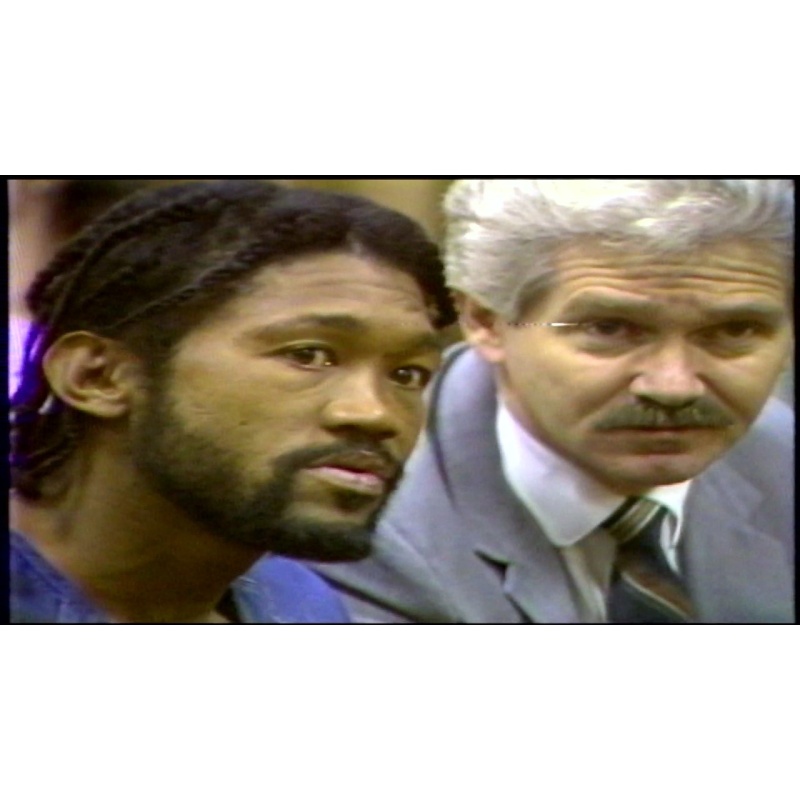SAMUEL MORELAND | Ohio Death Row | More than 30 years after being convicted for the 1985 murders of five people, including three children, the Ohio Supreme Court has announced the execution date | 9 × 12 envelope; 2.4 oz ALS
LongfellowSerenade 20
Samuel Moreland was sentenced to death by the State of Ohio for five murders. According to court documents Samuel Moreland would murder girlfriend, 46-year-old Glenna Green, her daughter, 23-year-old Lana Green, and her grandchildren, seven-year-old Daytrin Talbott, six-year-old Datwan Talbott and six-year-old Violana Green, in their Dayton home. Angry because Glenna would not give him money to buy beer, Moreland shot Glenna, Lana and Violana in their heads and pistol-whipped Daytrin and Datwan to death. Moreland was also convicted of attempted murder for shooting and pistol-whipping Glenna's other three grandchildren who were also in the house. Samuel Moreland would be arrested, convicted and sentenced to death.
At first, Talbott thought Samuel Moreland’s conviction for the 1985 murders of five of her family members would end in his swift execution. Moreland was convicted in the killing of Talbott’s mother, sister, two sons and niece at their home on Dayton’s South Ardmore Avenue. But now more than 38 years later, she is still waiting for it to happen.
“He’s a vicious, cold-blooded killer. He murdered my family,” Talbott said.
$20.00
- Postage
-
$0.00 to United States
Standard Shipping
Get Additional Rates
- Select Country
- Zip/Post Code
- Quantity
Description
Samuel Moreland. Autographed Correspondence, Signed. Handwritten, Brown Kraft (9 × 12 envelope. 2.4 oz). Chillicothe, OH. Pmk: September 7, 2023. Content unknown. SEALED.
Case summary details that Moreland was living with his girlfriend Glenna Green as well as Green’s daughter and grandchildren in November 1985.
On Nov. 1, 1985, Green’s second daughter and her children were staying in the house. One of the daughters, her boyfriend, and one of the grandsons left the house around 10:30 p.m. Moreland then began arguing with Green because she would not give him money for alcohol, according to case summary.
He left the argument three times and when he returned for the final time he allegedly shot Green twice in the head, and then shot her grandson. When the three family members returned, they found Moreland was not in the house and Green, her adult daughter, and three of her grandchildren were dead. Three more of the grandchildren were injured but survived.
Moreland met with Samuel Thomas and the two drank alcohol at Thomas’ house, case summary states. After Thomas drove Moreland home, he was arrested and told the arresting officers that they were “too late.”
When the officers tested Moreland’s hands for gunshot residue, he stated that it would not be helpful because he had been at a shooting range that day. They asked if he had signed into the range and he changed his statement, saying that he had been shooting along a river bank.
At trial, expert testimony estimated that Moreland’s blood alcohol level at the time of the shootings would have been between .30 and .36, rendering him too intoxicated to execute the shootings. Thomas, however, questioned the intoxication defense and others who saw Moreland that night stated that he did not struggle to walk or talk.
In April 1986, a three-judge panel found Moreland guilty of the aggravated murder of five people and attempted aggravated murder of three others. The panel sentenced him to death and the Ohio Supreme Court ultimately affirmed that ruling. The Ohio Court of Appeals found Moreland had waived his right to a trial by jury knowingly, voluntarily and intelligently.
Moreland then filed for a writ of habeas corpus, claiming his convictions for aggravated murder with prior calculation and design were not supported by sufficient evidence and that eyewitness testimony was not properly handled. The U.S. District Court – Southern District of Ohio denied the relief and Moreland appealed to the 6th Circuit.
“The Supreme Court of Ohio reasonably applied clearly established federal law in deciding that sufficient evidence supported Moreland’s convictions for committing aggravated murder with prior calculation and design,” Rogers stated.
The three-judge appellate panel determined that one of the grandchildren who was shot and survived had identified Moreland as the attacker. The child also stated that Moreland left the argument multiple times, giving him time away from the argument to cool down.
The panel maintained that Moreland’s leaving supported the conviction of prior calculation and design. It held that gunshot residue, eyewitness testimony from the child, his argument with Green and blood spots found on his clothes, supported Moreland’s conviction for the aggravated murders.
“Because the Supreme Court of Ohio did not unreasonably apply, or rule contrary to, Supreme Court law, the district court properly denied habeas relief on this claim,” Rogers continued.
The judges considered that the child was 11 years old at the time of the trial, old enough to be considered competent. They also determined that the trial judge evaluated the child in his chambers with all parties present and determined the boy to be competent enough to testify.
Finding that it was within the trial court’s discretion to find the boy’s testimony credible, the appellate court rejected Moreland’s contentions against it.
“As for (the boy’s) physical and mental status, the three-judge panel conducted an interview with (him) in chambers to consider his competence (even though he was presumed competent under Ohio law),” Rogers wrote.
“The judgment of the district court is affirmed.”
Fellow 6th Circuit Judges Richard Griffin and Danny Boggs joined Rogers to form the majority.
On March 26, 2015, Moreland filed an appeal before the US Court of Appeals for the Sixth Circuit.
Ohio court sets execution date despite unofficial moratorium
By Associated Press
The Ohio Supreme Court on Wednesday set a 2025 execution date for a man convicted of killing five people including three children more than three decades ago.
The court’s decision in the case of death row inmate Samuel Moreland comes even as an unofficial execution moratorium continues in Ohio, which has been unable to find the needed lethal drugs.
The court sided with the Montgomery County prosecutor, which requested an execution date with all of Moreland’s state and federal appeals ended. The court scheduled the execution for July 30, 2025.
Moreland’s attorneys opposed the request, arguing that Moreland has a petition pending with the Inter-American Commission on Human Rights alleging rights’ violations. That commission does not have the ability to stop a U.S. execution.
Moreland was convicted and sentenced to death for the 1985 Dayton murders of his girlfriend, Glenna Green, 46; her daughter, Lana Green, 23; and three of Glenna Green’s grandchildren: 7-year-old Daytrin Talbott, 6-year-old Datwan Talbott, and 6-year-old Violana Green.
Republican Gov. Mike DeWine said last year that because of Ohio’s difficulty finding drugs for executions, lethal injection is no longer an option, and lawmakers must choose a different method of capital punishment before any inmates can be put to death.
VIDEO: Still On Death Row | https://youtu.be/CzPurUJmVg4
Archiving Protocol:
• Handled with White Gloves ab initio
• Photo Pages/Sheet Protectors: Heavyweight Clear Sheet Protectors, Acid Free & Archival Safe, 8.5 × 11, Top Load
• White Backing Board—Acid Free
Shipping/Packaging: Rigid Mailer 9.5 × 12.5. White, self seal, stay flat, kraft cardboard, no bend. Each rigid mailer is made of heavy cardboard, which has strong resistance to bending and tearing. Thicker that the USPS mailers. Shipping cost never more than it absolutely has to be to get it from me to you.
Payments & Returns
- Payment Methods
- PayPal, Money Order
Postage & Shipping
- Item Location
- 54911, Wisconsin, United States
- Ships To
- Worldwide
- Pick-ups
- No pick-ups
- Returns Accepted
- No





